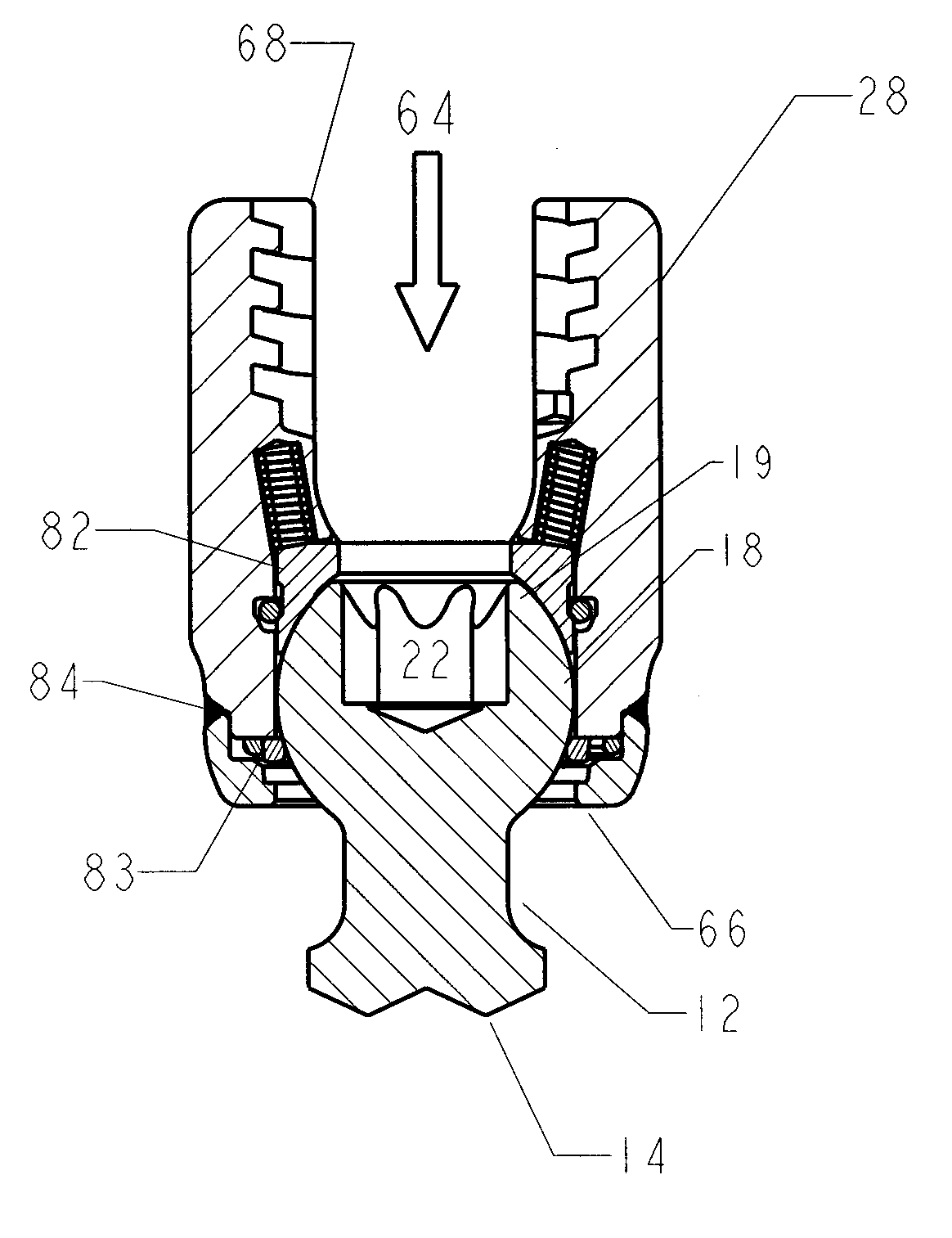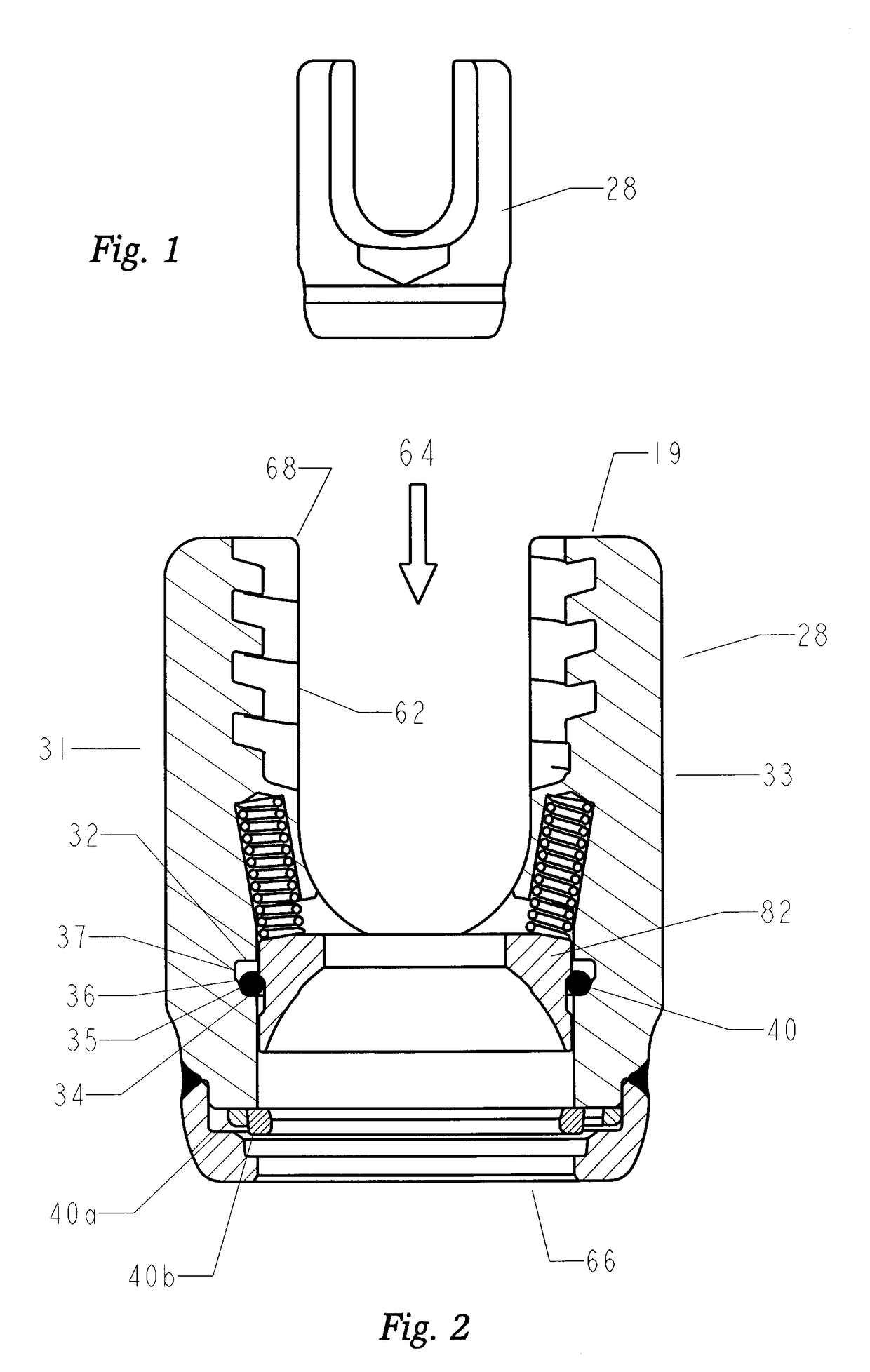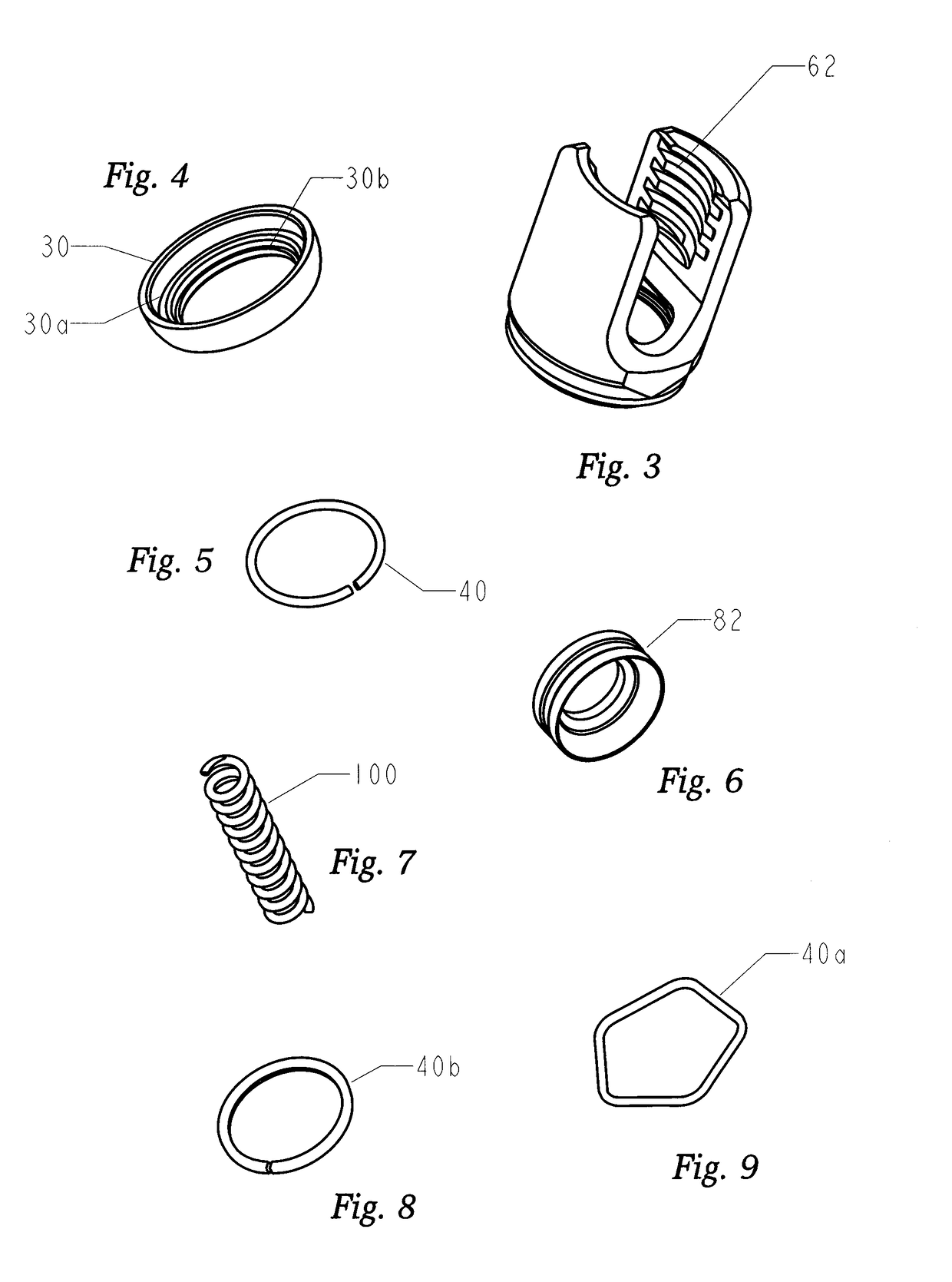Spring clip-bottom loading polyaxial ball and socket fastener
a polyaxial ball and socket technology, applied in the field of ball and socket fasteners, can solve the problems of large inventory, inability to determine the structure of the bone, and the anchoring screw may still require angular insertion, so as to reduce the amount of inventory
- Summary
- Abstract
- Description
- Claims
- Application Information
AI Technical Summary
Benefits of technology
Problems solved by technology
Method used
Image
Examples
Embodiment Construction
[0080]While the present invention is susceptible of embodiments in various forms, there is shown in the drawings and will hereinafter be described a presently preferred embodiment with the understanding that the present disclosure is to be considered an exemplification of the invention and is not intended to limit the invention to the specific embodiments illustrated.
[0081]The terminology used herein is for the purpose of describing particular embodiments only and is not intended to be limiting of the invention.
DEFINITIONS
[0082]As used herein, the singular forms “a”, “an” and “the” are intended to include the plural forms as well, unless the context clearly indicates otherwise. Furthermore, to the extent that the terms “including”, “includes”, “having”, “has”, “with”, or variants thereof are used in either the detailed description and / or the claims, such terms are intended to be inclusive in a manner similar to the term “comprising.”
[0083]As used in this specification and the append...
PUM
 Login to View More
Login to View More Abstract
Description
Claims
Application Information
 Login to View More
Login to View More - R&D
- Intellectual Property
- Life Sciences
- Materials
- Tech Scout
- Unparalleled Data Quality
- Higher Quality Content
- 60% Fewer Hallucinations
Browse by: Latest US Patents, China's latest patents, Technical Efficacy Thesaurus, Application Domain, Technology Topic, Popular Technical Reports.
© 2025 PatSnap. All rights reserved.Legal|Privacy policy|Modern Slavery Act Transparency Statement|Sitemap|About US| Contact US: help@patsnap.com



